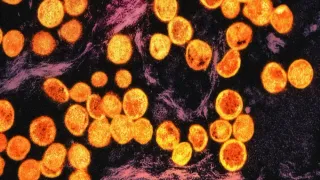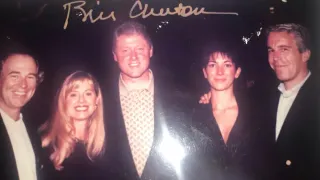
Oct 21
Blue Jays in World Series for First Time Since Before Ohtani Was Born, While Dodgers Seek to Repeat
Ronald Blum READ TIME: 4 MIN.
When slugger Joe Carter hit the last World Series pitch thrown in Canada over the left-field wall to win the Toronto Blue Jays' second consecutive title, it was 8 1/2 months before Shohei Ohtani was born.
The Blue Jays are back in baseball's championship round for the first time since 1993 and will host Ohtani and the Dodgers in Friday night's opener as Los Angeles tries to become the first repeat winner in a quarter century.
The previous time the World Series was played north of the border, the Steroids Era was just starting, advanced analytics were science fiction and complete games were thrown about twice a month.
While the Dodgers may be the favorite, Vladimir Guerrero Jr. and the Blue Jays have an entire country behind them after rallying to win the American League Championship Series with a 4-3 victory over Seattle in Game 7 on Monday night.
Until now, Toronto's only World Series appearances resulted in back-to-back titles in 1992 and '93.
“You always feel the weight of the world in decisions you make but when you’re kind of feeling a country, it kind of gets a little dicey at times,” manager John Schneider said early in the postseason. “Sixth inning with the bases loaded and nobody out and Aaron Judge hitting, you feel like people in Nova Scotia want to come murder you.”
George Springer and the AL East champion Blue Jays have home-field advantage in the best-of-seven Series because they finished the regular season with 94 wins, one more than the NL West champion Dodgers.
“They just got all their guys rolling. They’re scoring seven, eight runs, 10 runs a game, so that’s tough to slow down," Los Angeles shortstop Mookie Betts said. "They’re doing all three facets of the game.”
Seeking the franchise’s ninth title and eighth since bolting Brooklyn for Los Angeles after the 1957 season, the Dodgers have overrun opponents during the postseason. Ohtani is starring at the plate and on the mound, a performance that would be deemed CGI if not witnessed by thousands in person.
“Sometimes you’ve got to check yourself and touch him to make sure he’s not just made of steel,” teammate Freddie Freeman said.
Before his three-homer at the plate and 10-strikeouts, six-scoreless innings mound show last Friday night, Ohtani’s bat had been slumping.
He’s hitting .220 with five homers and nine RBIs in the postseason and is 2-0 with a 2.25 ERA in a pair of pitching starts, striking out 19 and walking four in 12 innings.
Los Angeles is back in the World Series for the fifth time since 2017 and is seeking its third championship in six years. The Dodgers are the first defending champion to reach the Fall Classic since the 2009 Philadelphia Phillies, who lost to the New York Yankees in six games.
No team has won consecutive titles since the Yankees took three in a row from 1998-2000. The gap is the longest in baseball history, topping the previous high between the 1977-78 Yankees and the 1992-93 Blue Jays.
In other U.S. major leagues, the longest Super Bowl title gap was between the 2004-05 New England Patriots and the 2023-24 Kansas City Chiefs, the longest in the NBA was between the 1968-69 Boston Celtics and the 1987-88 Los Angeles Lakers, and the lengthiest in the NHL was between the 1997-98 Detroit Red Wings and the 2016-17 Pittsburgh Penguins.
“Realizing how hard it is to do last year, realizing how hard it was in ’20, it’s special,” Dodgers catcher Will Smith said. “Trying to get back-to-back is even more special.”
Toronto pitcher Max Scherzer was on the 2021 Dodgers team that fell short, losing to Atlanta in the National League Championship Series. Hall of Famers Rickey Henderson and Fred McGriff also played for both franchises, along with two-time All-Star Justin Turner.
Dodgers first baseman Freddie Freeman has dual American-Canadian citizenship — his parents were born in Canada.
Blue Jays bench coach Don Mattingly, in the World Series for the first time after a long and successful career in baseball, managed the Dodgers from 2011-15.
The Triple-A Montreal Royals were the Dodgers’ top farm team from 1939-60 — Jackie Robinson started his Dodgers career there in 1946, a year before he broke the major league color barrier.
Los Angeles entered the postseason with a big league-high $341.5 million payroll, according to Major League Baseball’s latest tabulation, and is projected to pay nearly $168 million in luxury tax, easily a record. Counting the $6.5 million signing bonus in rookie Roki Sasaki’s minor league contract, the Dodgers’ player cost this year totals $516 million — with final numbers to be calculated during the offseason.
Including Sasaki’s signing bonus, the 13 pitchers on the Dodgers' NLCS roster alone cost $124.5 million.
Toronto has the fifth-highest payroll at $252.7 million and is on track to spend $266 million including just over $13 million in luxury tax. No small-market team has won the title since the 2015 Kansas City Royals.
“Before this season started, they said the Dodgers are ruining baseball,” manager Dave Roberts shouted to the crowd after Friday night’s National League pennant clincher. “Let’s get four more wins and really ruin baseball!”
Los Angeles pitchers are 9-1 with a 2.45 ERA in 10 postseason games, including 7-1 with 1.40 ERA for starting pitchers totaling 64 1/3 of 82 innings. Led by Blake Snell and Yoshinobu Yamamoto, Dodgers starters were 3-0 with a 0.63 ERA in the NLCS and their staff held the Milwaukee Brewers to a .118 batting average during the four-game sweep, lowest in a postseason series of at least three games.
LA’s four postseason starters totaled 73 starts and 372 1/3 innings during the regular season. Their closer threw 36 1/3 innings.
That’s because Snell, Tyler Glasnow and Sasaki all hurt their pitching shoulders and Ohtani didn’t return to the mound until June 16 after recovering from elbow surgery in 2023.
If the Blue Jays win
Toronto, which started play in 1977, could become the 15th of the 30 teams to win three or more titles. That would be more than Cleveland and Philadelphia, franchises that have existed for longer than a century.






